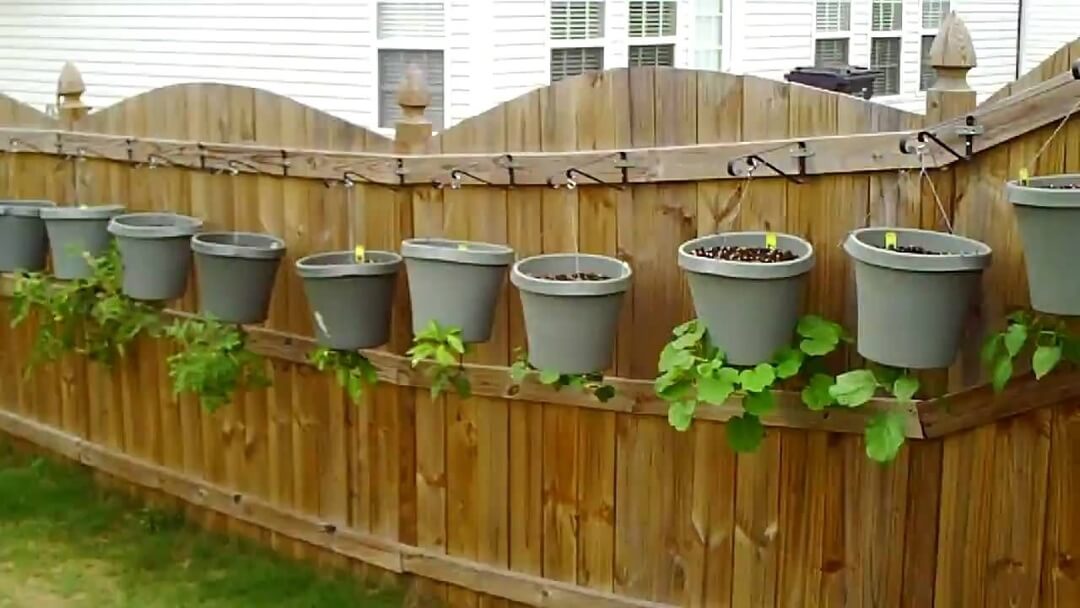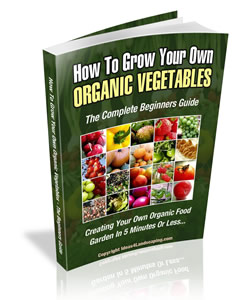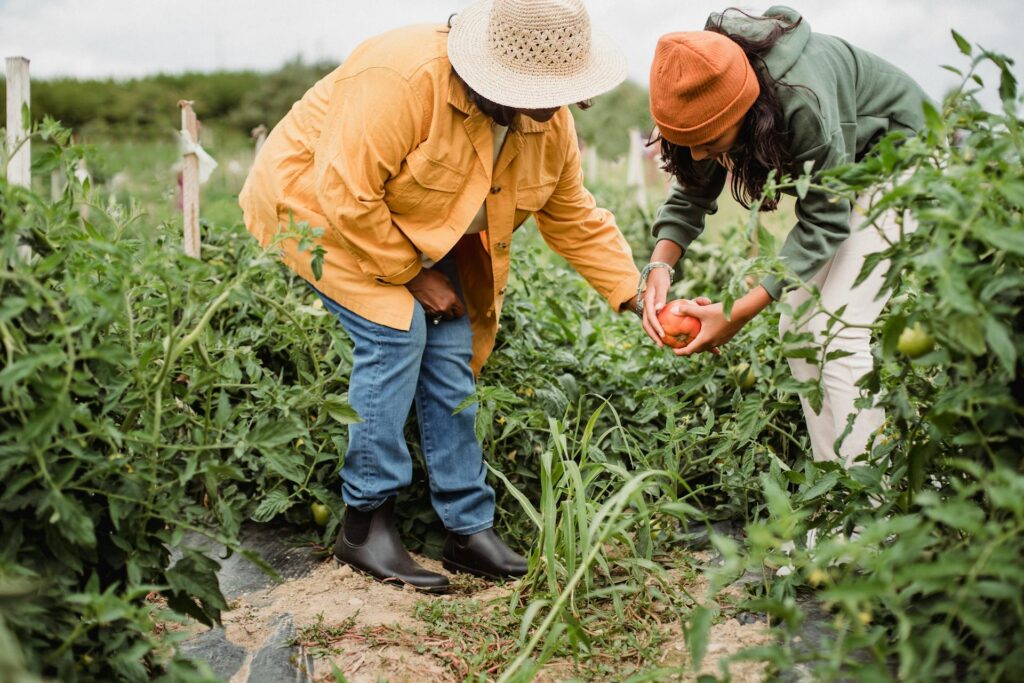
Your Ultimate Guide for Designing A Sustainable and Eco-Friendly Backyard Herb and Vegetable Garden
I hope that this Ultimate Guide for designing a sustainable and eco-friendly backyard herb and vegetable garden will inspire you to get your garden gloves out and start digging!
Designing an Eco-Friendly Backyard garden can be one of the most rewarding pastimes, especially for women and men over 50. Not only will it benefit your health, but also your mental wellbeing. Do you want to learn how to create your sustainable, Eco-friendly backyard Herb and Vegetable garden? Keep on reading for our Ultimate Guide on designing and planning your garden.
Our Ultimate Guide will give you all the information you need to start the journey of creating an herb and vegetable garden in your backyard. Not only will it provide fresh produce, but it will also contribute to sustainable living. Planning and designing such a garden requires thoughtful consideration of space, resources, and environmental factors. Here are some valuable tips and suggestions for creating a sustainable herb and vegetable garden while making the best use of available space.
1. Assess Your Space:
- Sunlight: Determine the sunlight exposure in your backyard as most vegetables and herbs thrive in full sun. Identify areas that receive at least 6-8 hours of sunlight daily.
- Soil Quality: Test the soil’s pH level and nutrient content. If needed, improve soil quality by adding compost, mulch, or organic matter.
2. Ultimate Guide to Plan the Layout:
- Utilize Vertical Space: Consider vertical gardening using trellises, hanging baskets, or wall-mounted planters for vining plants like tomatoes, cucumbers, or beans. This optimizes space and enhances air circulation.
- Companion Planting: Group plants that benefit each other. For instance, planting basil near tomatoes can improve the tomatoes’ flavor and repel pests.
- Succession Planting: Plan successive planting to maximize yield. Once one crop finishes, replant that area with another vegetable or herb.
See below for an excellent Guide:

3. The Ultimate Guide To Select Plants Wisely:
- Grow What You Consume: Choose vegetables and herbs your family enjoys and uses regularly to prevent waste.
- Native and Adaptive Plants: Opt for native or adapted varieties that thrive in your region, requiring less water and care.
4. Watering and Irrigation:
- Efficient Watering: Install drip irrigation or soaker hoses to deliver water directly to the plant roots, minimizing water loss through evaporation.
- Rainwater Harvesting: Set up rain barrels to collect and store rainwater for watering the garden, reducing dependency on municipal water.
5. Implement Sustainable Practices:
- Mulching: Use organic mulch (like straw, wood chips, or shredded leaves) to retain soil moisture, suppress weeds, and enrich the soil as it decomposes.
- Natural Pest Control: Employ natural pest deterrents like companion planting, introducing beneficial insects, or using homemade remedies instead of synthetic pesticides.
6. Regular Maintenance:
- Weeding and Pruning: Regularly weed and prune to maintain plant health and prevent overcrowding.
- Crop Rotation: Rotate crops annually to minimize soil depletion and prevent the buildup of pests and diseases.
7. Continuous Learning:
- Educate Yourself: Keep learning about sustainable gardening practices through books, online resources, or local gardening clubs to improve your garden’s productivity and sustainability.
8. Reuse and Recycle:
- Upcycling: Reuse materials like containers, old tires, or pallets creatively for planters or raised beds.
- Composting: Compost kitchen scraps and garden waste to create nutrient-rich soil amendment for your garden.
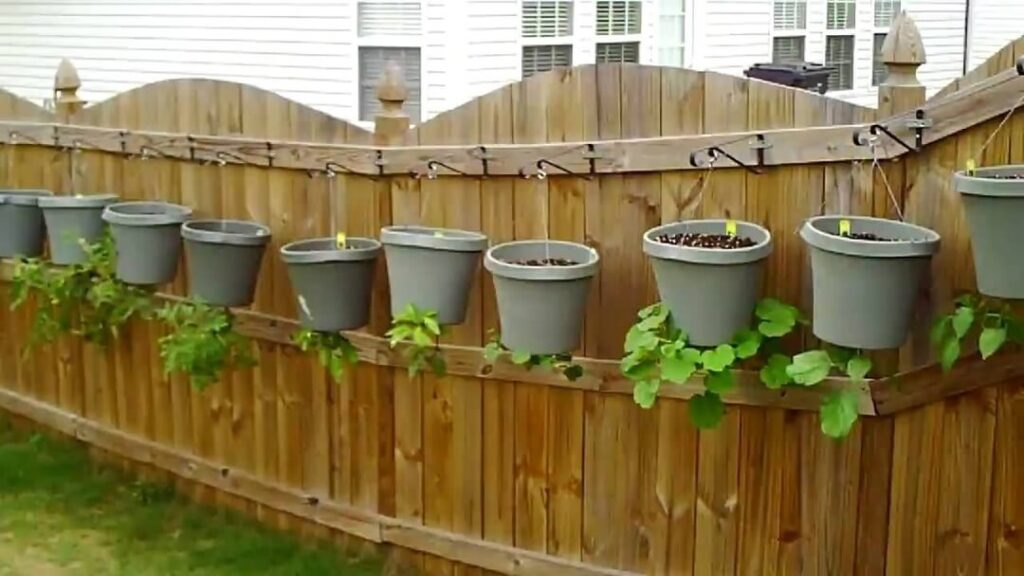
Ultimate Guide to Maximizing Crop Yield: Unlocking the Potential of Vertical Space in Gardening
In the realm of gardening, making the most of limited space is a challenge many enthusiasts face. Vertical gardening offers a practical solution, allowing you to optimize space and increase crop yields without expanding your garden horizontally. By utilizing walls, fences, trellises, and other structures, vertical space becomes an untapped resource for growing a variety of crops. Here are several effective ways to harness vertical space for maximum crop yield:
1. Vertical Planters and Hanging Baskets
Vertical planters and hanging baskets are versatile options that efficiently use vertical space. Planters with multiple tiers or pockets allow for growing herbs, strawberries, lettuce, or even small root vegetables vertically. Hanging baskets filled with trailing plants like tomatoes, peppers, or strawberries create an attractive display while maximizing yield.
2. Trellises and Arbors
Utilize trellises and arbors to support vining plants such as cucumbers, beans, peas, and squash. These plants naturally climb and sprawl, making them ideal candidates for vertical growth. By training them to climb upward, you’ll conserve ground space while promoting better airflow and easier harvesting.
3. Wall-Mounted Gardens
Transform bare walls into productive gardens by installing wall-mounted containers or modular systems. Herbs like basil, thyme, and sage thrive in vertical planters, while leafy greens such as kale, spinach, and arugula can also flourish in these spaces.
4. Espalier Technique for Fruit Trees
Espalier, an ancient horticultural practice, involves training fruit trees along a flat, vertical surface. By pruning and guiding branches horizontally, fruit trees like apples, pears, or figs can be cultivated against walls or fences. This technique not only saves space but also makes fruit trees more accessible for maintenance and harvesting.
5. Vertical Hydroponic Systems
Hydroponic systems designed for vertical gardening enable the cultivation of a wide range of crops without soil. Utilizing nutrient-rich water solutions and stacked trays or towers, hydroponic systems are space-efficient and allow for year-round growth of herbs, lettuce, strawberries, and various greens.
Examples of Effective Utilization:
- Tomato Towers: Sturdy cages or stakes help support tomatoes as they grow vertically, saving ground space and reducing the risk of diseases caused by soil contact.
- Bean Teepees: Construct teepees using bamboo poles or stakes and twine for beans to climb. This not only maximizes space but also creates a visually appealing structure in the garden.
- Herb Walls: Vertical planters mounted on walls or fences house a diverse array of herbs, adding greenery and culinary delights to your garden while using minimal space.
- Vertical Garden Structures: Constructing wooden frames or pallet gardens with multiple levels offers ample space for planting various crops, creating an eye-catching and productive garden display.
Utilizing vertical space in gardening not only optimizes land use but also fosters healthier plants, better air circulation, and easier pest management. Embrace these vertical gardening techniques to maximize your crop yield, regardless of the size of your gardening space. With creativity and thoughtful planning, vertical gardening opens doors to abundant harvests in even the most confined areas.
Companion Planting: A Comprehensive Guide to Harmonious Garden Growth
Companion planting is a gardening technique that involves cultivating different plant species near other plants that mutually benefit each other. This practice has ancient roots, with indigenous communities and traditional agricultural societies recognizing the advantages of planting specific crops together. The scientific basis for companion planting lies in the synergistic relationships between certain plants, where one plant’s aroma, root exudates, or natural defenses help repel pests, enhance nutrient uptake, or improve flavor for its companion plants. The benefits include increased biodiversity, natural pest control, improved soil fertility, and overall healthier plants, making it an eco-friendly and sustainable approach to gardening.
History and Traditional Practices The practice of companion planting has roots deeply embedded in ancient agricultural practices worldwide. Indigenous cultures and traditional farming societies utilized this method to create resilient and diverse agricultural systems. Through observation and experimentation, they discovered which plants thrived when grown together, leading to improved crop yields and healthier plants. These time-tested practices have been passed down through generations and continue to influence modern gardening approaches.
Scientific Basis and Benefits Scientific studies have substantiated the benefits of companion planting. Certain plants emit chemical compounds that repel pests, attract beneficial insects, or enhance the flavor and growth of neighboring plants. This symbiotic relationship between plants creates a balanced ecosystem, reducing the incidence of pests and diseases while promoting soil health and biodiversity. The advantages include improved soil structure, reduced dependency on synthetic pesticides, and increased resilience of plants against environmental stressors.
Popular Vegetables in Companion Planting
Tomatoes: Tomatoes are exceptionally compatible with basil. The aromatic compounds released by basil help repel pests such as aphids and hornworms that commonly afflict tomatoes. This combination not only safeguards the tomatoes but also enhances their flavor, making basil an ideal companion.
Cucumbers: Cucumbers thrive when interplanted with beans, radishes, or dill. Beans provide nitrogen to the soil, benefiting the cucumber’s growth, while radishes and dill act as natural pest deterrents, protecting the cucumbers from harmful insects.
Carrots: Companion planting carrots with leeks, onions, and peas benefits both parties. The strong aroma of these companion plants deters pests, such as carrot flies, while the carrots provide a ground cover, aiding in moisture retention and weed suppression.
Peppers: Peppers flourish alongside marjoram, basil, and onions. The presence of these companions not only deters pests but also improves the peppers’ overall resistance to diseases, resulting in a healthier and more bountiful harvest.
Corn: The “Three Sisters” guild, comprised of corn, beans, and squash, exemplifies a time-honored companion planting practice. Corn provides a natural support structure for beans to climb, while beans fix nitrogen in the soil. Squash acts as a ground cover, inhibiting weed growth and preserving soil moisture for all three plants.
Stay tuned for more insights into companion planting techniques and how different herbs play a crucial role in supporting vegetables in the garden.
Creating a sustainable herb and vegetable garden requires time, patience, and dedication. Embrace the process, adapt techniques to suit your space and needs, and enjoy the bountiful rewards of fresh, homegrown produce while contributing positively to the environment.
Eco-Friendly Gardening Tips:
Creating an eco-friendly garden involves adopting practices that minimize environmental impact while nurturing plant life. Here are the ten best eco-friendly gardening tips:
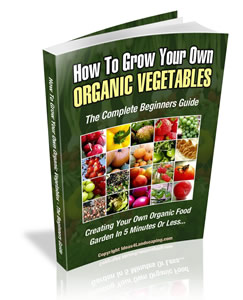
1. Implement Organic Practices
Embrace organic gardening techniques by avoiding synthetic pesticides, herbicides, and fertilizers. Opt for natural alternatives such as compost, mulch, and organic soil amendments to nourish the soil and plants without harmful chemicals.
2. Conserve Water
Practice water conservation methods such as mulching to retain moisture, using drip irrigation or soaker hoses for targeted watering, and collecting rainwater in barrels. These techniques minimize water waste and promote efficient usage in the garden.
3. Composting
Establish a composting system to recycle kitchen scraps, yard waste, and organic matter into nutrient-rich compost. This natural fertilizer enriches the soil, reduces landfill waste, and supports a healthy garden ecosystem.
4. Native and Adaptive Plants
Select native or adaptive plant species that are well-suited to your region’s climate and soil conditions. These plants typically require less water, fertilizer, and maintenance, contributing to a more sustainable garden.
5. Attract Beneficial Insects
Encourage biodiversity by planting flowers and herbs that attract beneficial insects like bees, ladybugs, and predatory insects. These helpers pollinate plants and control pest populations naturally, reducing the need for chemical interventions.
6. Companion Planting
Utilize companion planting techniques to cultivate plant communities that mutually benefit each other. Pairing compatible plants can deter pests, enhance growth, and improve overall garden health without relying on synthetic pesticides.
7. Natural Pest Control
Employ natural pest control methods like introducing beneficial insects, using insect-repelling plants, or applying homemade remedies (e.g., neem oil or garlic spray) to manage pests while minimizing harm to beneficial organisms and the environment.
8. Mulching
Apply organic mulch, such as straw, wood chips, or shredded leaves, around plants to retain soil moisture, suppress weeds, regulate soil temperature, and enhance soil fertility. Mulching minimizes water usage and promotes healthier plant growth.
9. Reduce, Reuse, Recycle
Embrace sustainable practices by repurposing materials for garden structures, using recycled containers or garden tools, and minimizing waste. Repurposing items reduces environmental impact and encourages resourcefulness in gardening.
10. Continuous Learning and Adaptation
Stay informed and continuously educate yourself about eco-friendly gardening practices. Join local gardening groups, attend workshops, read reliable sources, and learn from experience to adapt and evolve your gardening methods towards greater sustainability.
Adopting these eco-friendly gardening practices not only benefits your garden but also contributes positively to the environment by promoting biodiversity, conserving resources, and reducing ecological impact. Embrace these tips to create a thriving and sustainable garden sanctuary.
KEEN TO LEARN MORE? Take a look at this valuable book below!

